Welcome to our guide to the 10 best beautiful places in Tokyo!
Japan’s bustling capital is a hub of technology and culture and a city brimming with stunning sights, from serene gardens and historic temples to futuristic skyscrapers and vibrant neighborhoods.
Whether you’re a first-time visitor or a seasoned traveler, Tokyo offers a unique blend of the old and the new, each spot telling its own story.
Join us as we explore the city’s most breathtaking spots, promising unforgettable views and experiences that capture the essence of Tokyo.
- Recommended BEST Tours in Tokyo
- Recommended Tokyo Hotels
- Cheap Flights, Airline Tickets & Plane Tickets (TRIP.COM)
Number 10: Ueno Park.
Kicking off our list at number 10 is Ueno Park, a verdant oasis in the bustling heart of Tokyo. This park is one of Tokyo’s largest green spaces and one of its most beloved, especially famous for its stunning display of cherry blossoms in the spring.
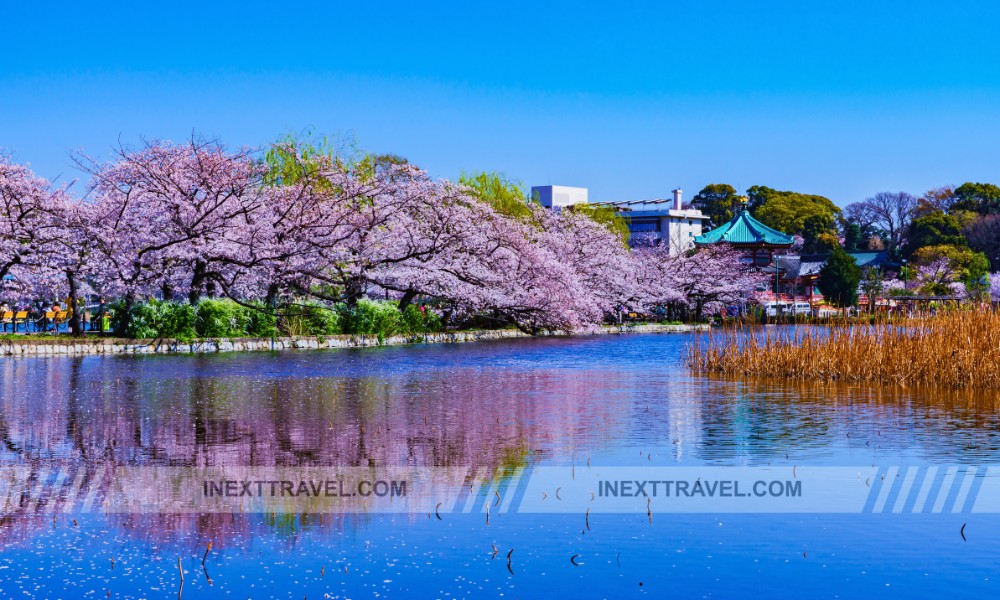
During the cherry blossom season, or sakura, the park becomes a prime spot for hanami, the traditional Japanese custom of flower viewing, where friends and families gather under blooming cherry trees to enjoy food, drink, and good company.
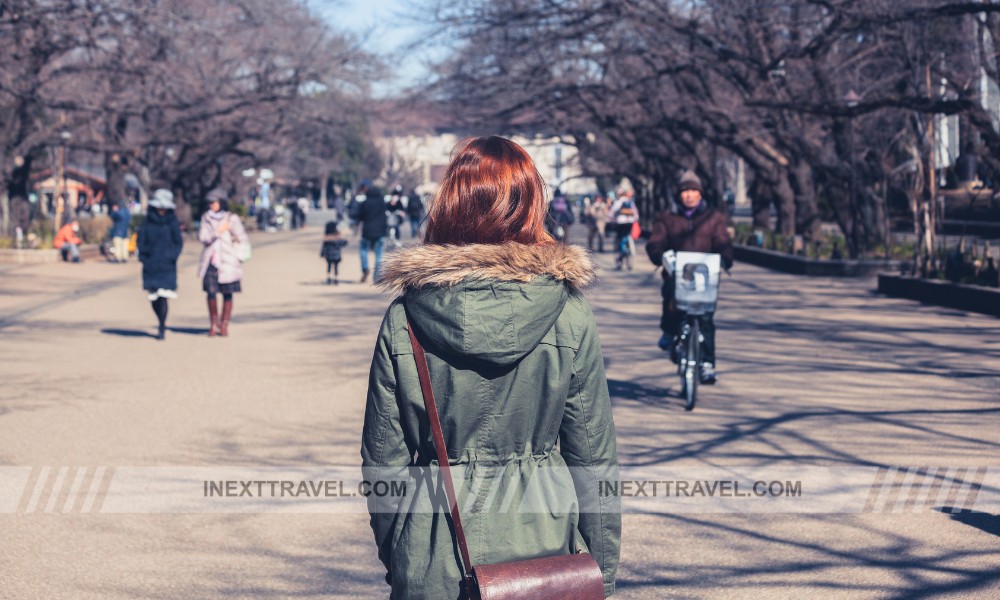
Beyond its seasonal allure, Ueno Park is a cultural hub, home to several major museums, including the Tokyo National Museum, the National Museum of Nature and Science, and the Ueno Royal Museum.
It also houses Ueno Zoo, Japan’s oldest zoo, especially popular among families. The park’s spacious grounds feature picturesque ponds, such as Shinobazu Pond, where visitors can rent paddle boats to explore its tranquil waters, bordered by lotus beds and marshland.
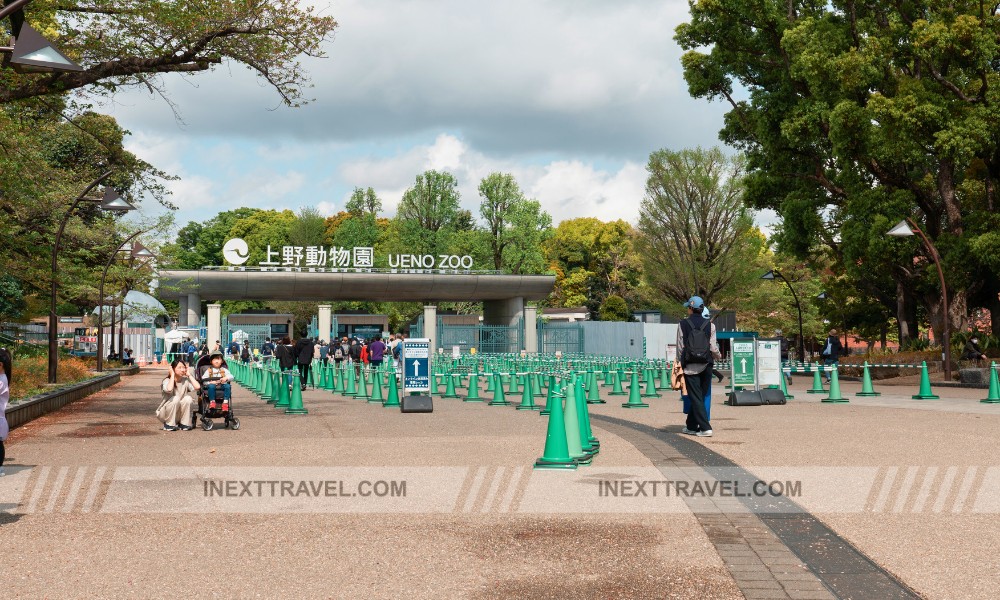
Ueno Park’s appeal is multifaceted. It serves as a venue for relaxation and recreation, cultural enrichment, and seasonal festivities.
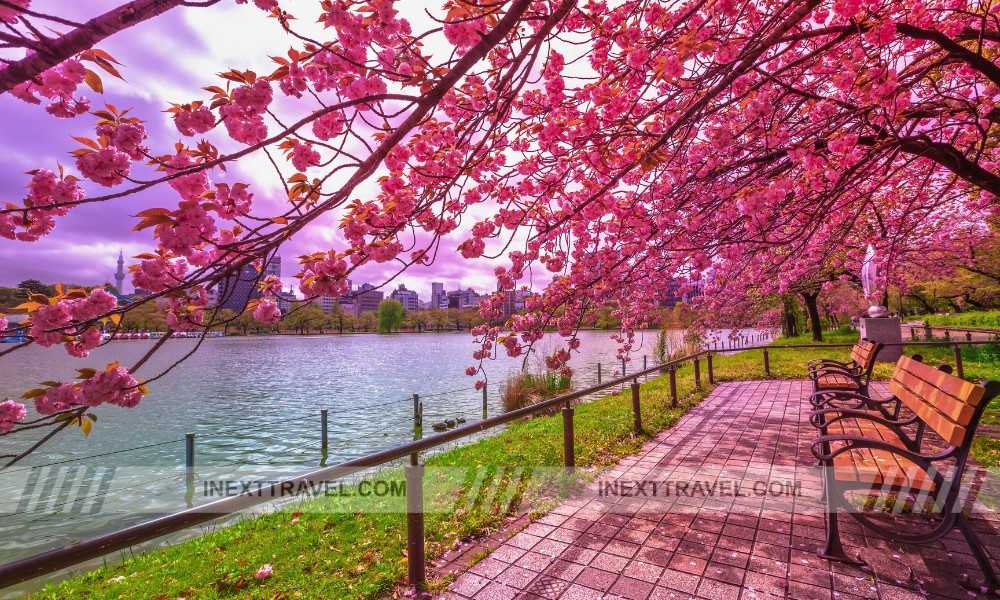
Whether visitors are drawn by the art, nature, or history, Ueno Park offers a peaceful retreat from the urban energy of Tokyo, making it a must-visit destination year-round for anyone seeking a blend of natural beauty and cultural vibrancy in Tokyo.
Number 9: Odaiba.
At number 9, Odaiba stands out as Tokyo’s futuristic and vibrant waterfront district. It offers some of the most breathtaking views of Tokyo Bay and the iconic Rainbow Bridge. This artificial island has been masterfully developed into a popular leisure and tourism hub known for its innovative architecture and wide range of attractions.
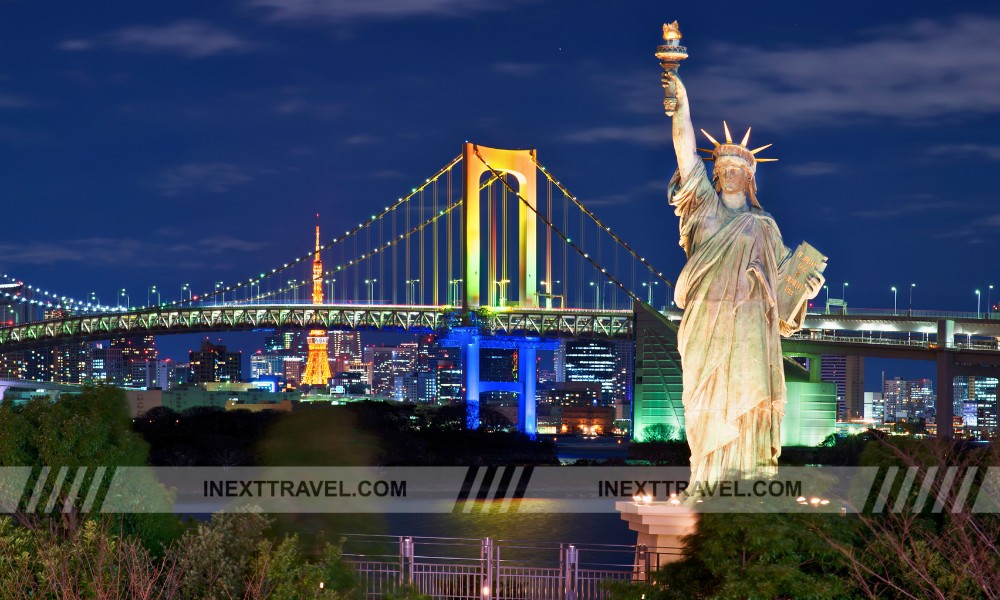
Odaiba is a perfect destination for a romantic evening and a fun-packed day. The Rainbow Bridge lights up spectacularly as night falls, creating a stunning backdrop for a stroll along the waterfront. The area’s seaside parks also offer ideal spots for picnics and leisure activities with expansive water views and the city skyline.
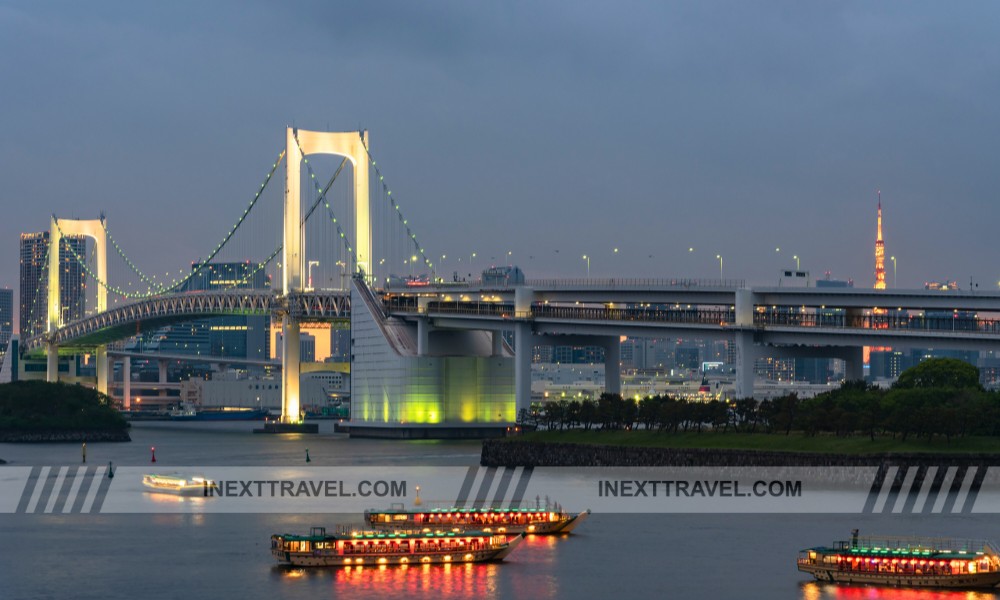
For those looking for entertainment and shopping, Odaiba doesn’t disappoint with its large shopping centers, such as Aqua City and DiverCity Tokyo Plaza. The latter features the towering Gundam statue, which has become a landmark in its own right.
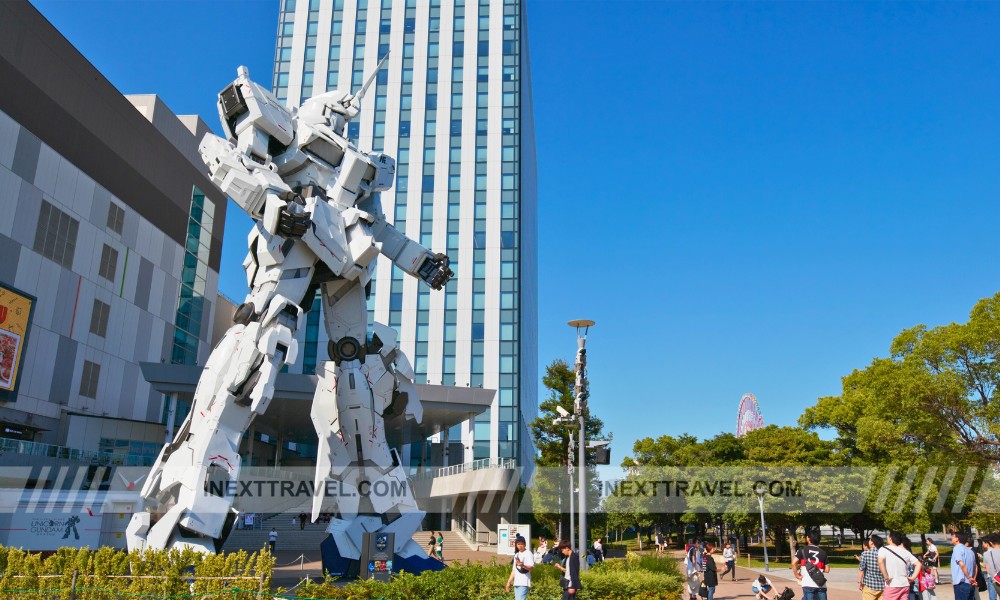
Palette Town, another popular complex, includes Venus Fort, a shopping mall that resembles a medieval European village, and Mega Web, a car theme park created by Toyota.
In addition to shopping and dining, Odaiba offers a variety of attractions, including Oedo-Onsen-Monogatari, a hot springs theme park that transports visitors back to the Edo Period, and teamLab Borderless, a world of artwork without boundaries created by digital art installations.

These attractions make Odaiba not just a place to visit but a place to experience and explore, blending futuristic innovation with leisure and scenic beauty.
Number 8: Asakusa.
At number 8, Asakusa offers a captivating glimpse into Tokyo’s rich history and traditional culture, making it a standout destination. Known for its old-town ambiance and centuries-old buildings, Asakusa is home to Senso-ji, Tokyo’s oldest and most significant temple, which draws millions of visitors annually.
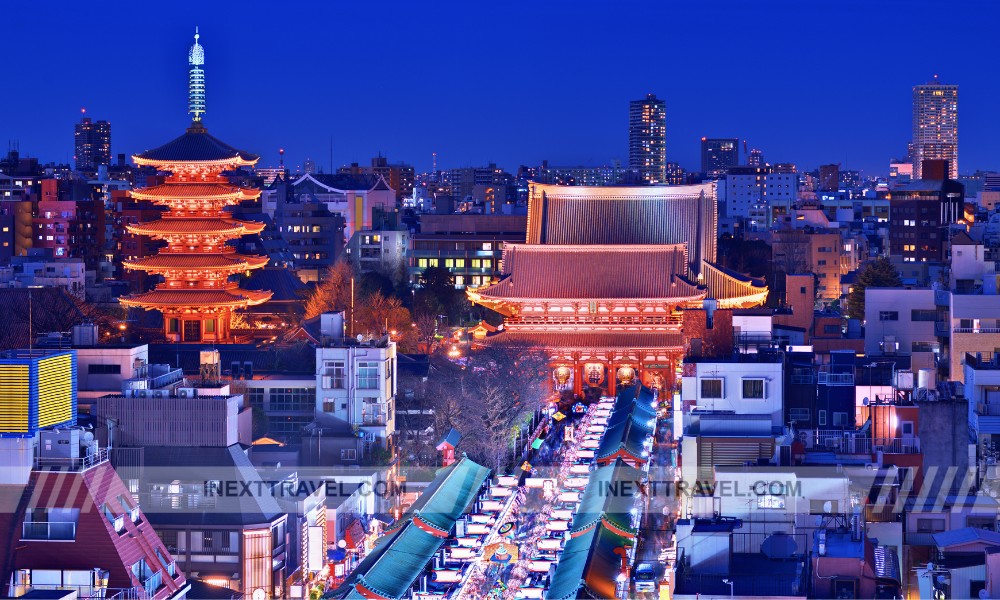
Founded in the 7th century, Senso-ji remains a pivotal center of worship. It is instantly recognizable by its towering red lantern and majestic Thunder Gate (Kaminarimon), which leads to a bustling world of spiritual and cultural exploration.
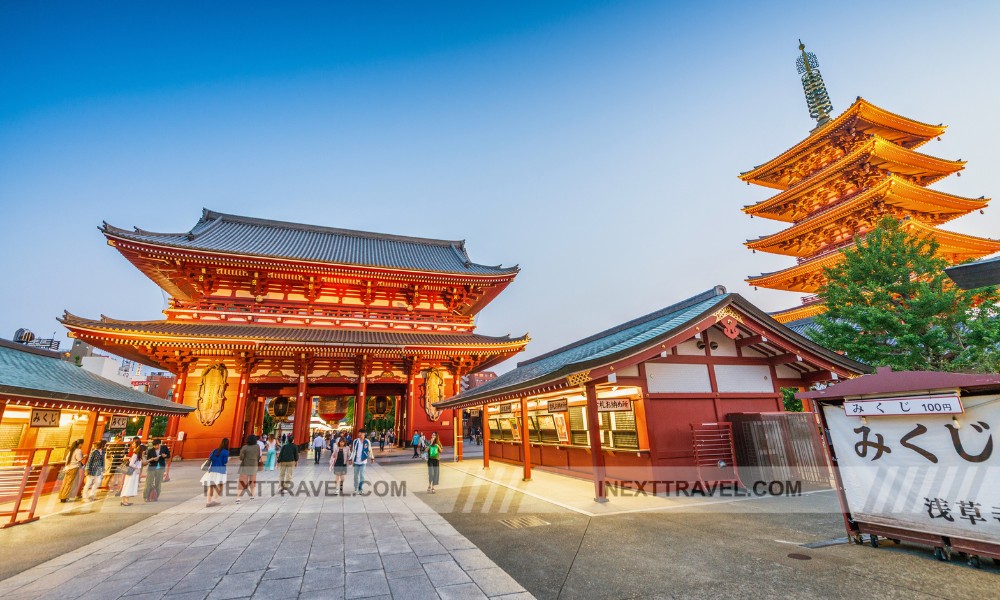
The streets surrounding Senso-ji are lined with vibrant markets such as Nakamise-dori, where visitors can indulge in traditional Japanese snacks like ningyo-yaki (sweet cakes) and kibi-dango (millet dumplings). These markets also offer various souvenirs ranging from hand-crafted fans to unique kimonos, making them a perfect spot for finding gifts and souvenirs.
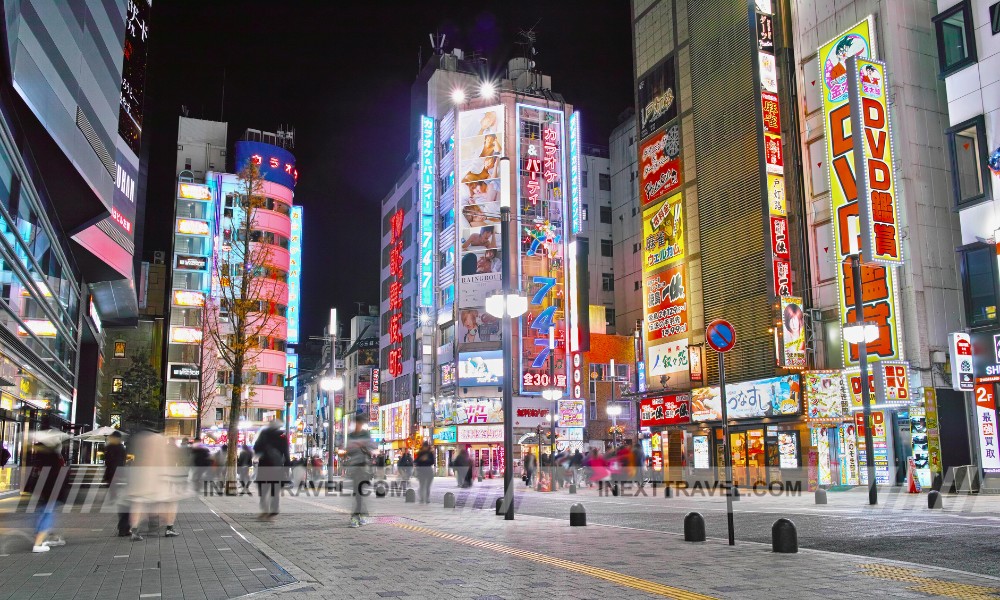
In addition to the markets, Asakusa hosts various traditional festivals throughout the year, including the famous Sanja Matsuri, one of Tokyo’s largest and most vibrant festivals. This area attracts not only those interested in religious history and traditional crafts but also photographers and culture enthusiasts keen to capture the timeless atmosphere of Tokyo’s storied past.
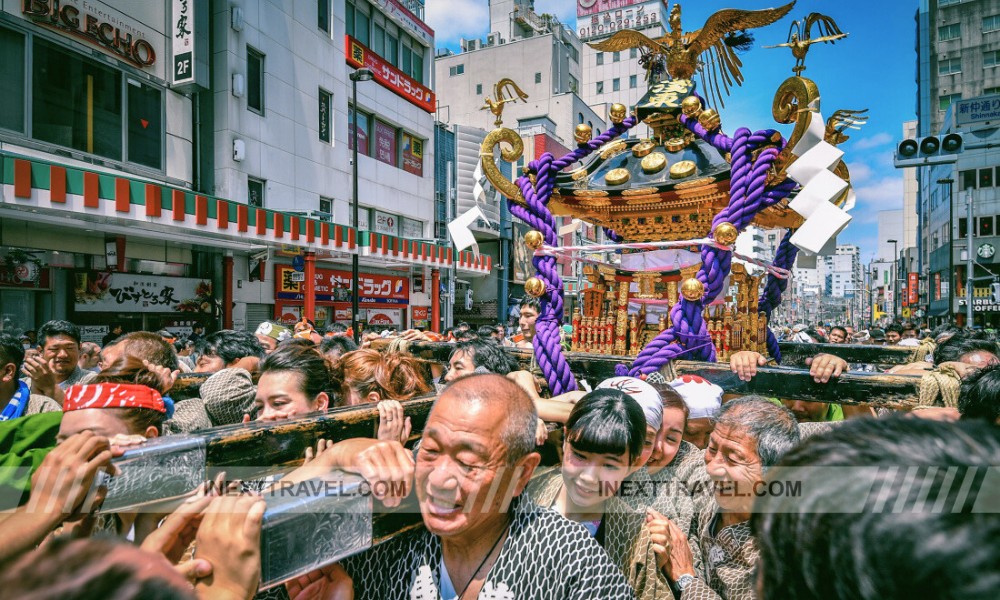
Asakusa’s blend of historical significance, cultural vibrancy, and community spirit makes it a must-visit district for anyone looking to experience the soul of Tokyo beyond its modern facades. Whether exploring the grandeur of Senso-ji, sampling local delicacies, or simply soaking in the festive spirit of its streets, Asakusa offers an enriching journey through the heart of traditional Tokyo.
Number 7: Shibuya Crossing.
Landing at number 7, Shibuya Crossing is not just a crosswalk; it’s a global icon of urban activity and one of Tokyo’s most visually striking symbols. Known as the world’s busiest pedestrian crossing, this bustling intersection represents Tokyo’s high-energy urban lifestyle.
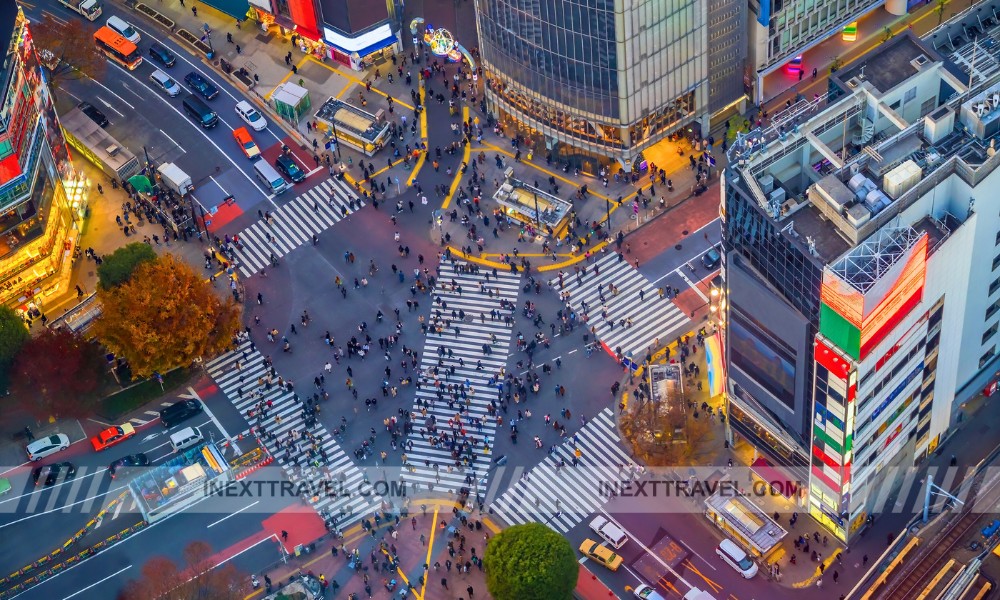
Each time the traffic lights turn red, hundreds of people from all directions flood into the intersection, creating a remarkable spectacle of organized chaos that’s a must-see for any visitor to the city.
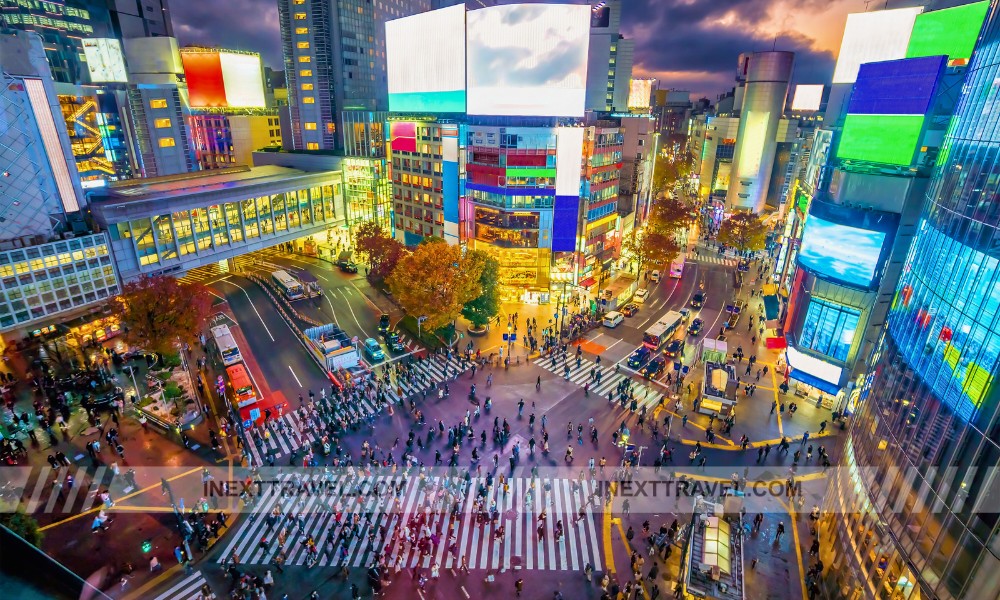
Located in front of Shibuya Station, one of Tokyo’s busiest railway stations, Shibuya Crossing is surrounded by towering digital billboards and screens that light up the area with vibrant advertisements and news broadcasts, adding to the sensory overload that makes this spot uniquely mesmerizing.
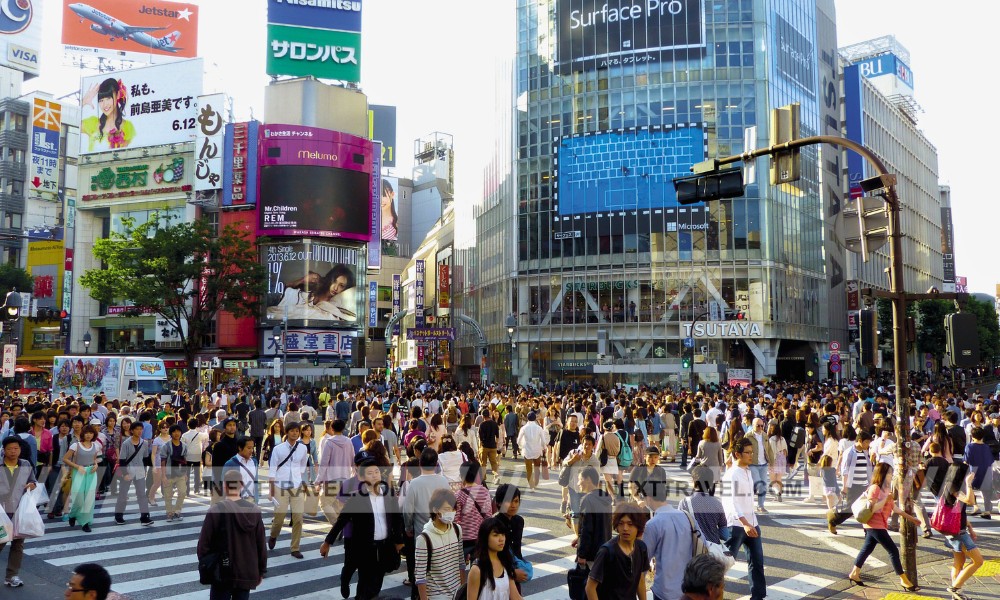
This area is a popular spot for photographers and filmmakers who aim to capture the essence of Tokyo’s dynamic energy. It is also a prime example of the city’s blend of technology and humanity.
Beyond the crossing, the Shibuya district is a significant commercial and business hub known for its youthful fashion scene, nightlife, and entertainment options. Nearby, visitors can explore famous fashion streets, trendy boutiques, and numerous cafes and restaurants that offer everything from traditional Japanese meals to global cuisines.
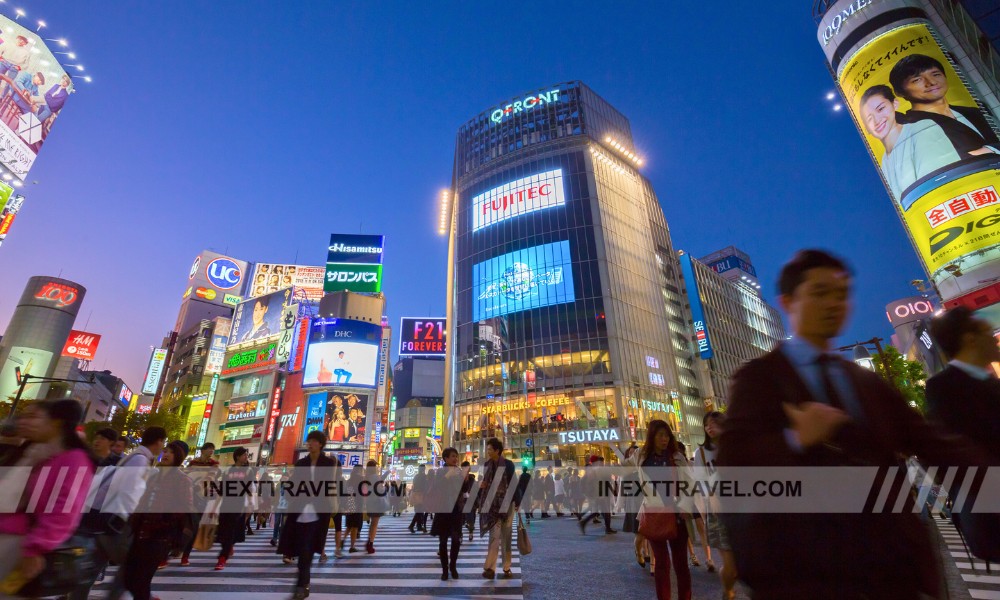
Shibuya Crossing, with its ceaseless flow of pedestrians and the pulsating energy of its surroundings, offers a vivid snapshot of contemporary Tokyo life, making it a compelling stop for anyone looking to dive into the heart of this bustling metropolis.
Number 6: Meiji Shrine.
At number 6, Meiji Shrine stands as a serene sanctuary amid the bustling city of Tokyo. Dedicated to the deified spirits of Emperor Meiji and his consort, Empress Shoken, the shrine is a place of deep spiritual significance and a tranquil escape from the city’s fast-paced lifestyle.
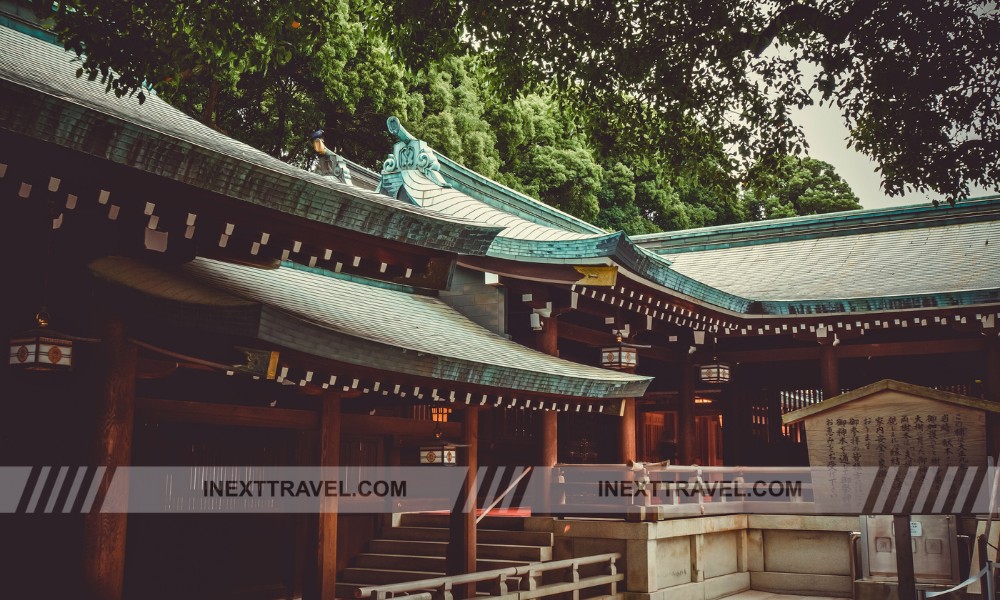
Constructed in 1920, this Shinto shrine is enveloped by a dense, lush forest covering 170 acres, making it one of Tokyo’s largest green spaces. This forest was painstakingly created by planting over 100,000 trees donated from regions across Japan, symbolizing peace and rejuvenation.
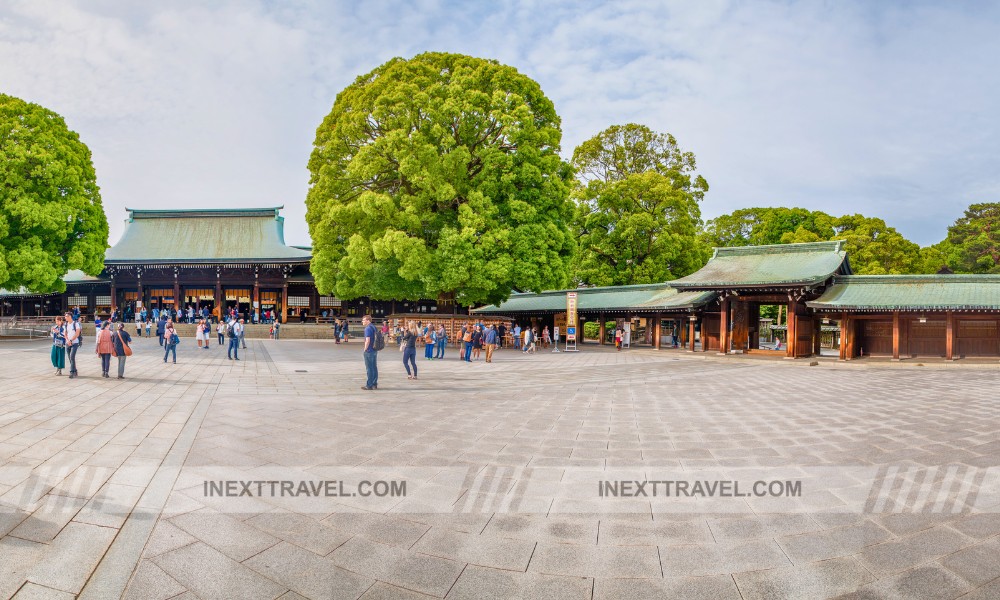
Visitors to Meiji Shrine are greeted by the towering Torii gate, a traditional Japanese gate that marks the entrance to sacred spaces, setting the tone for the reflective atmosphere. The shrine’s grounds are perfect for a peaceful walk or meditation, with winding paths that meander through the verdant landscape, past historical displays, and serene ponds.
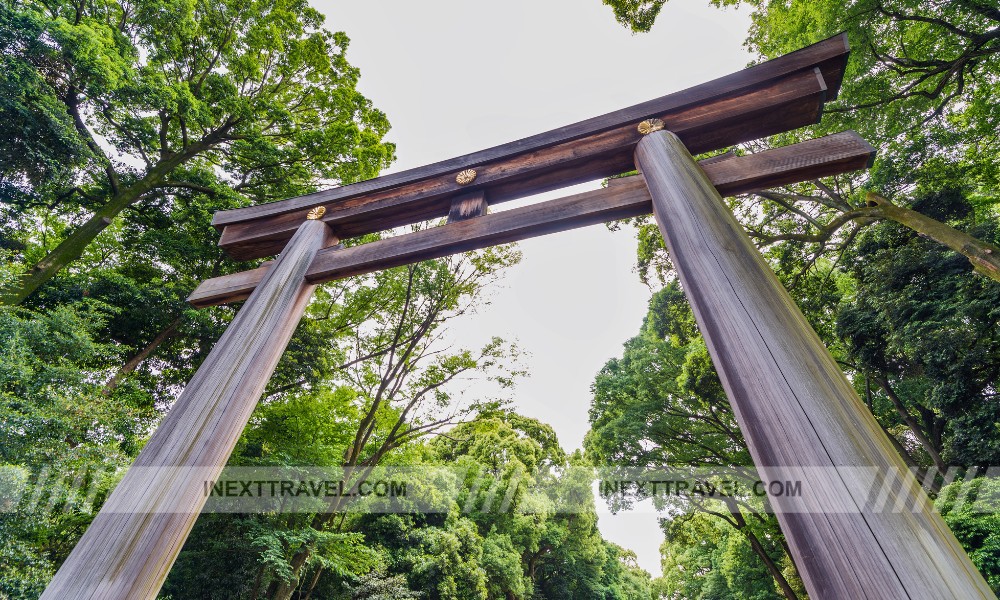
The shrine complex is a fine example of traditional Shinto architecture, characterized by its simplicity and natural materials, designed to harmonize with the surrounding forest. Meiji Shrine hosts various traditional Shinto ceremonies and festivals throughout the year, drawing participants from across Japan and worldwide eager to experience these rich cultural events.
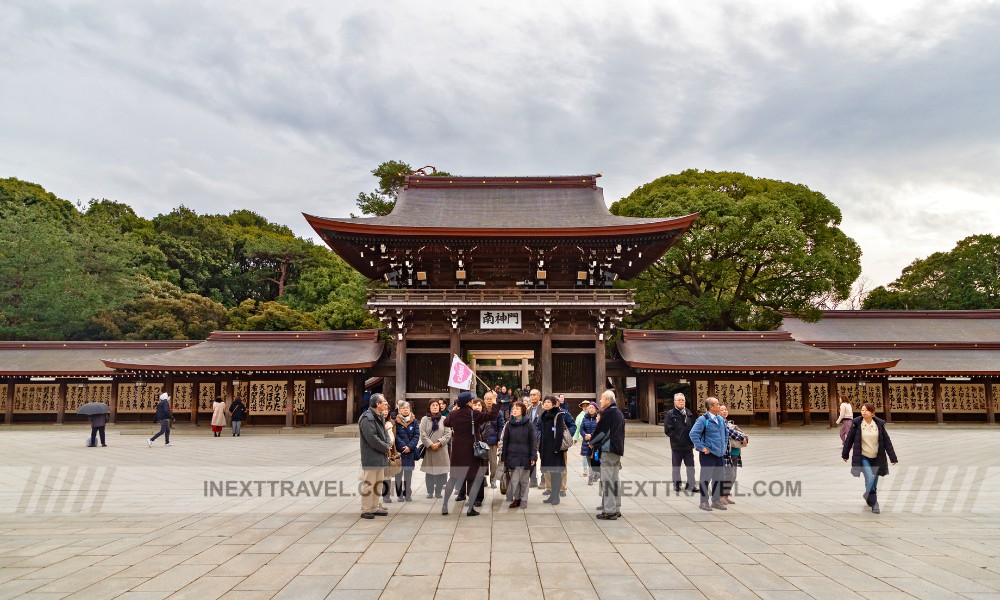
Meiji Shrine also offers cultural insight through its treasure house, which displays many belongings of the Emperor and Empress, including royal robes and personal writings. This gives visitors a deeper understanding of the Meiji Era’s impact on Japan.
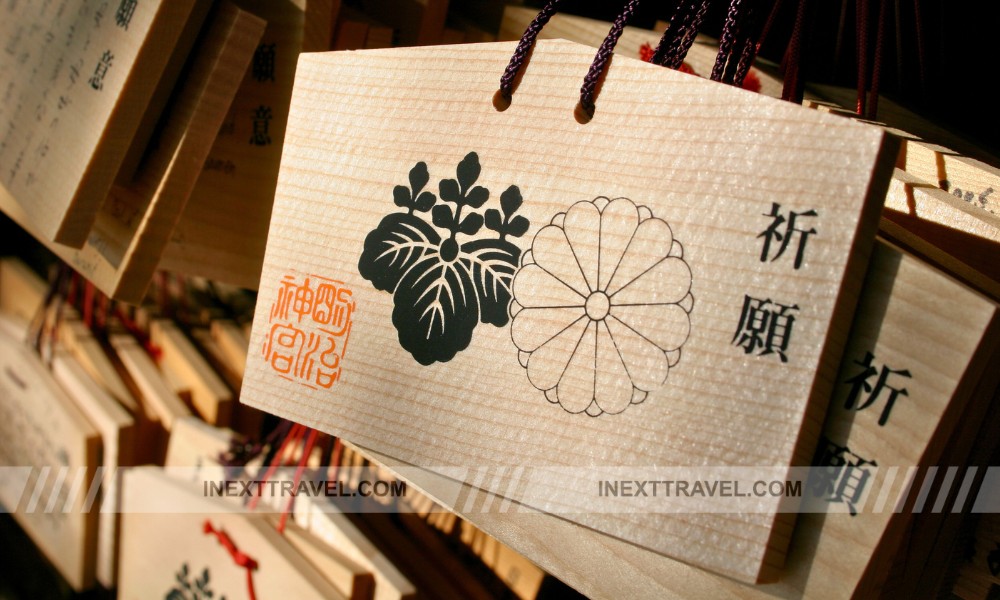
Whether seeking spiritual solace, cultural enrichment, or peace, Meiji Shrine offers a profound experience amidst its sacred woods’ natural beauty and tranquility.
Number 5: Ginza.
Securing the number 5 spot, Ginza is Tokyo’s epitome of luxury and sophistication. Known as one of the city’s most glamorous shopping districts, Ginza caters to those with refined tastes, featuring an array of high-end boutiques, luxury brand stores, and exclusive shops that showcase the latest in fashion, jewelry, and electronics.
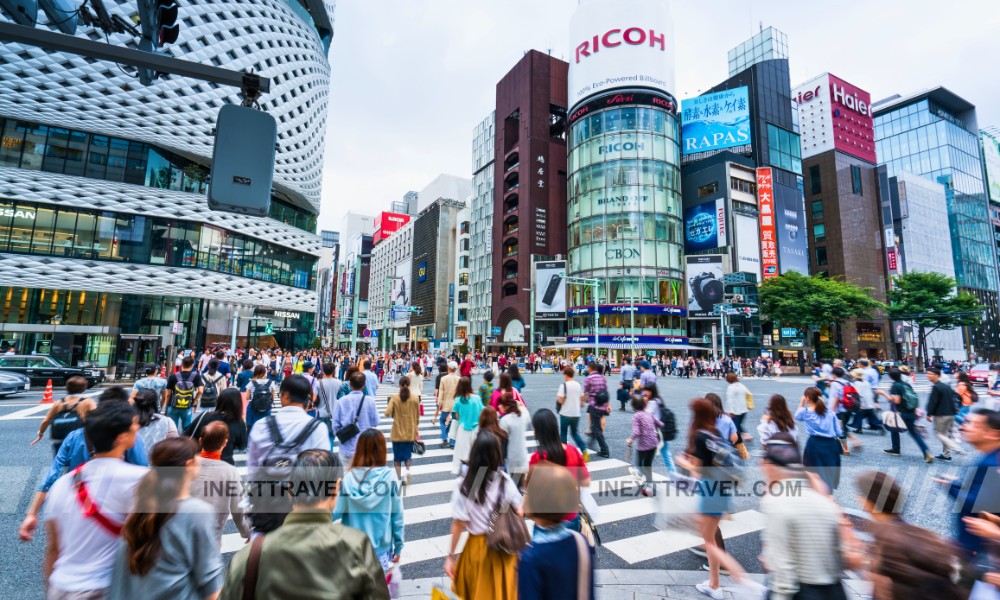
This area is a fashionista’s paradise and a haven for anyone seeking high-quality products and designer labels from internationally renowned and homegrown Japanese brands.
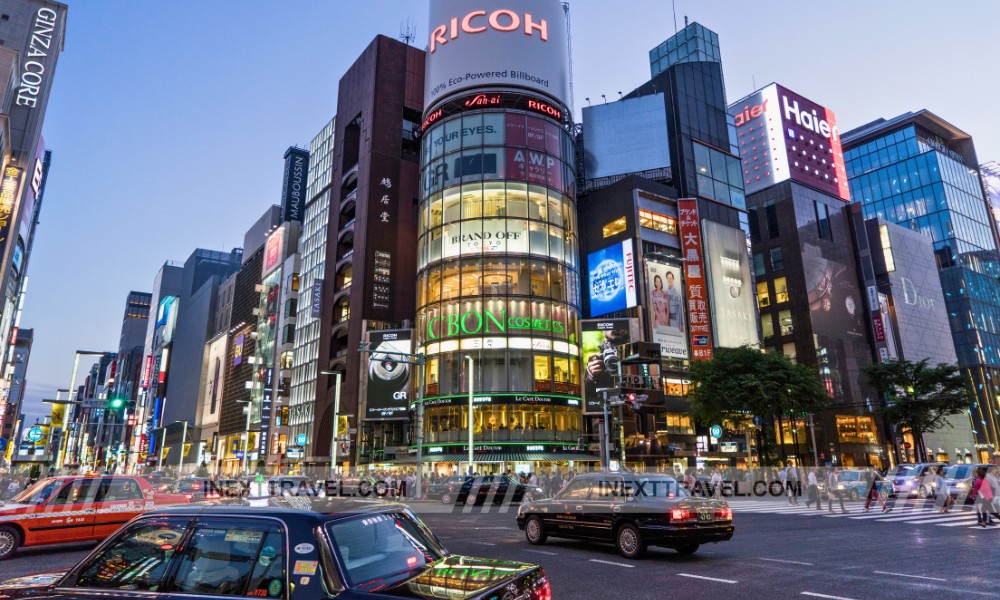
Beyond just shopping, Ginza is also celebrated for its gourmet dining scene. The district has some of Tokyo’s finest restaurants and cafes, offering everything from exquisite traditional Japanese meals to Michelin-starred international cuisine.
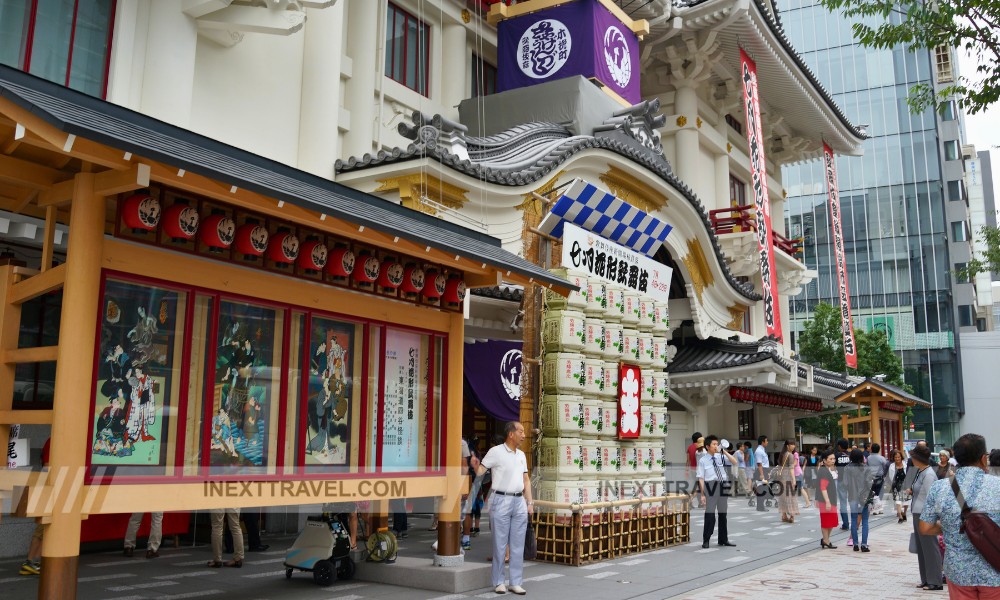
The culinary offerings in Ginza are as diverse as they are sophisticated, making it a must-visit for food enthusiasts looking to experience the best of what Tokyo has to offer.
The architecture in Ginza also reflects its upscale nature, with beautifully designed storefronts and modern buildings illuminating the wide boulevards. These are incredibly striking after dusk when the neon lights come to life.
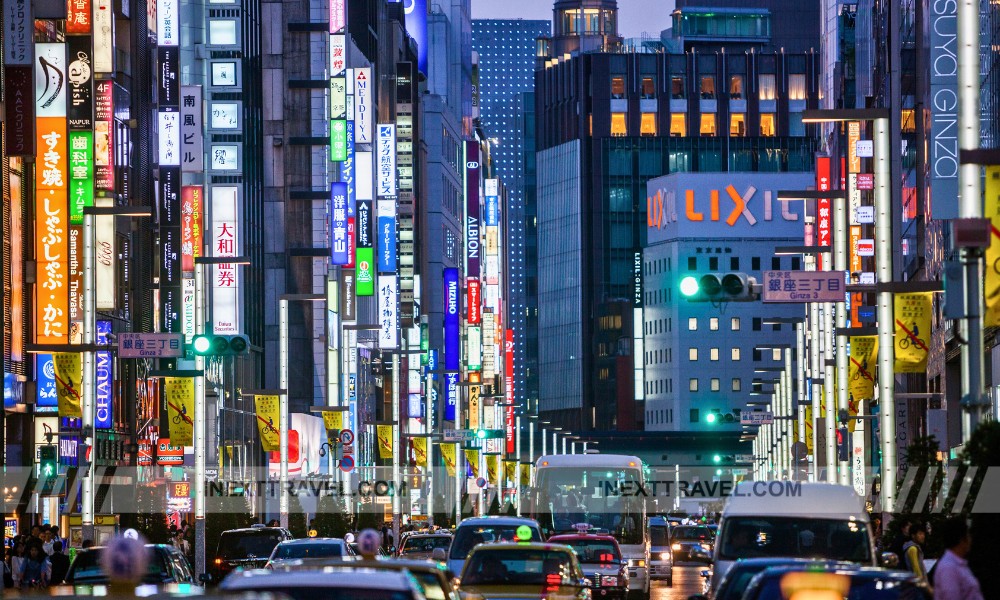
Weekends provide a unique pedestrian-friendly environment as central Chuo Dori, the main shopping street, closes to traffic and transforms into a bustling promenade, allowing shoppers and tourists to wander freely.
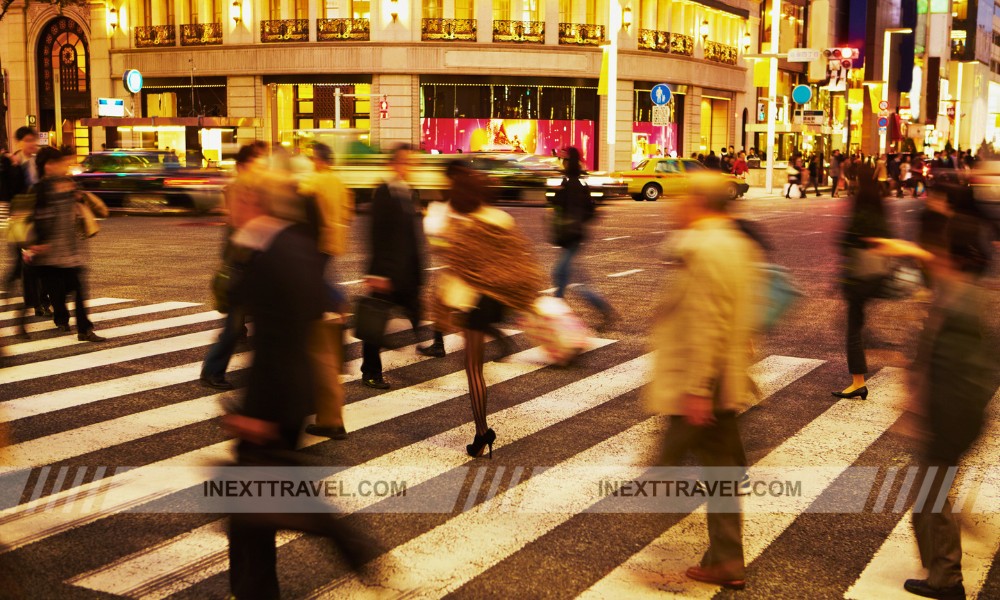
For cultural enthusiasts, Ginza boasts several art galleries and theaters, including the famous Kabuki-za Theatre, where visitors can catch traditional Kabuki performances. The blend of culture, luxury, and gastronomy makes Ginza a shopping destination and a comprehensive experience of Tokyo’s heights of urban sophistication.
Number 4: Roppongi Hills.
At number 4, Roppongi Hills is a towering symbol of Tokyo’s modernity and a key player in the city’s cultural and architectural innovation. This expansive multi-use complex opened in 2003 and includes office space, apartments, shops, restaurants, a hotel, and a large outdoor arena. It’s a microcosm of urban sophistication that blends lifestyle and art against a backdrop of dramatic high-rise architecture.
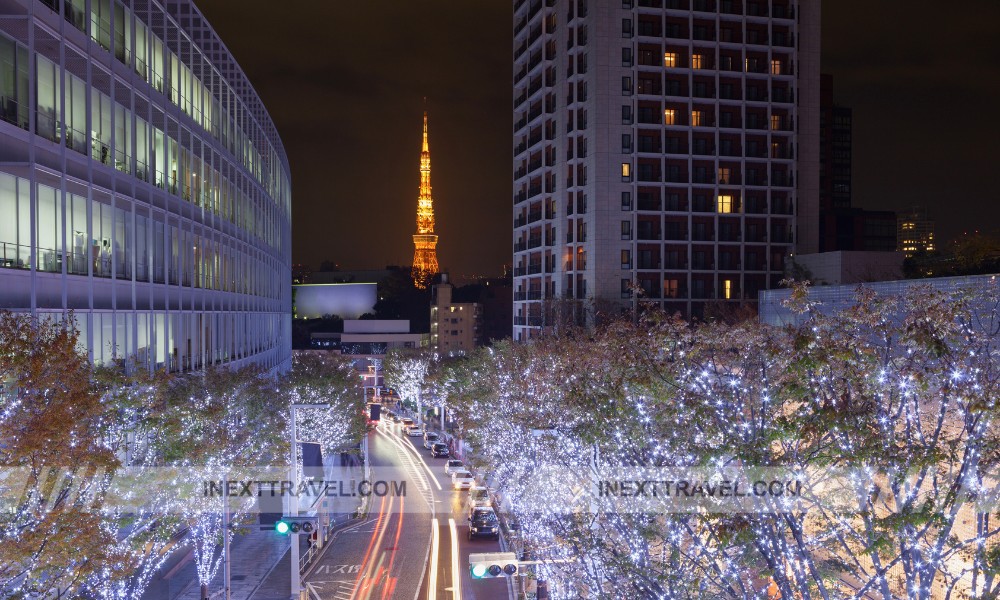
The Mori Tower is one of Tokyo’s tallest buildings, Dominating the Roppongi Hills skyline. The tower is a landmark not only for its height but also for the Mori Art Museum, which is located on its top floors and hosts a variety of contemporary art exhibitions from around the world.
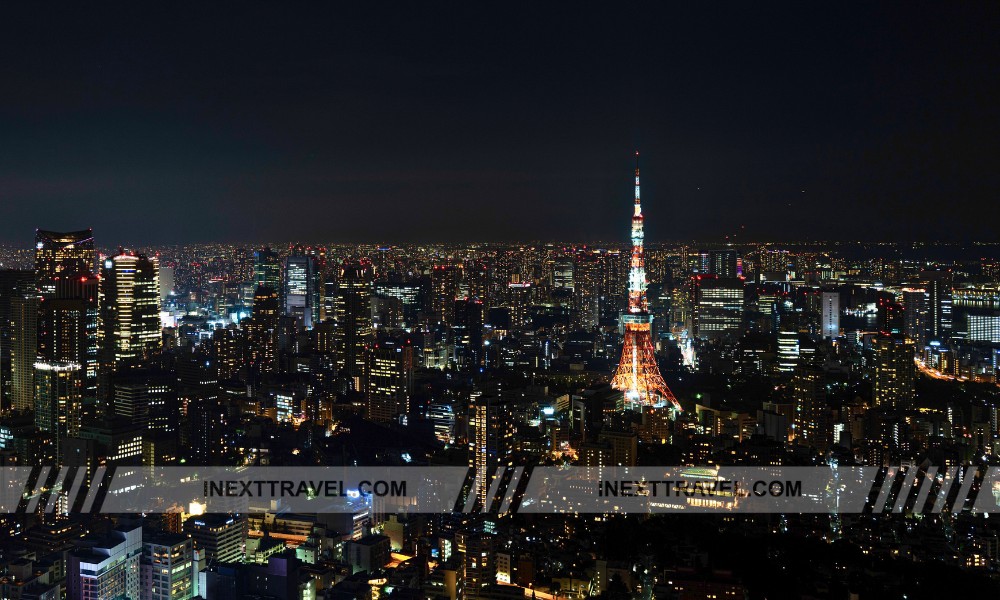
These exhibitions are often thought-provoking and include works from acclaimed and emerging artists, reflecting a broad spectrum of global cultures and perspectives.
The observation deck at the top of Mori Tower offers one of Tokyo’s most breathtaking panoramic views. Visitors can look out over the city’s vast sprawl, including iconic sights such as Tokyo Tower and, on clear days, Mount Fuji in the distance. This view encapsulates the essence of Tokyo’s vastness and its blend of traditional and modern architectural styles.
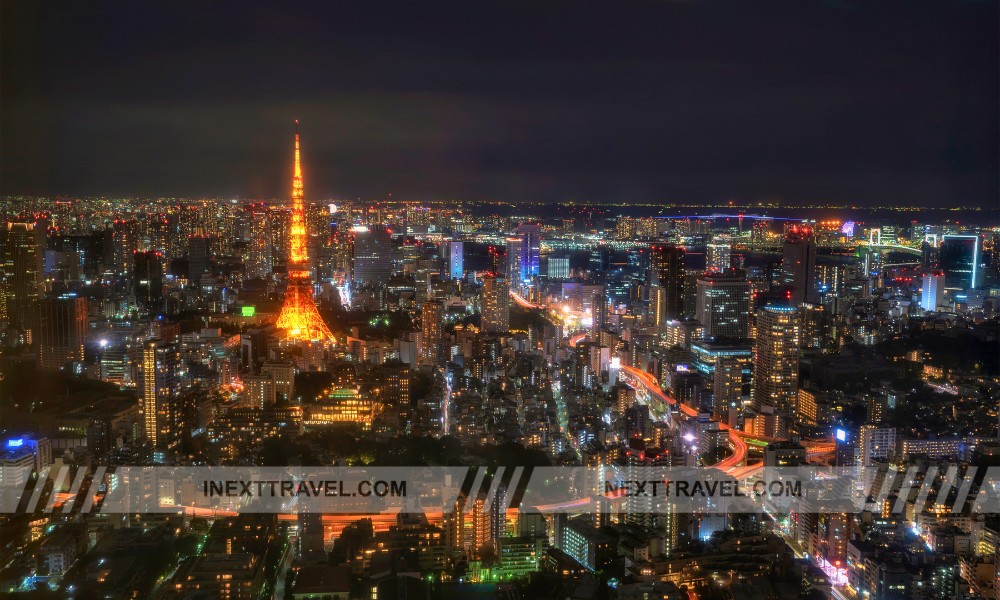
Roppongi Hills is also known for its public art installations and meticulously designed green spaces, contrasting the urban environment pleasantly. The complex’s integration of art, nature, and urban life attracts a cosmopolitan crowd. It makes it a cultural hub for art enthusiasts and anyone interested in experiencing the vibrant pulse of contemporary Tokyo.
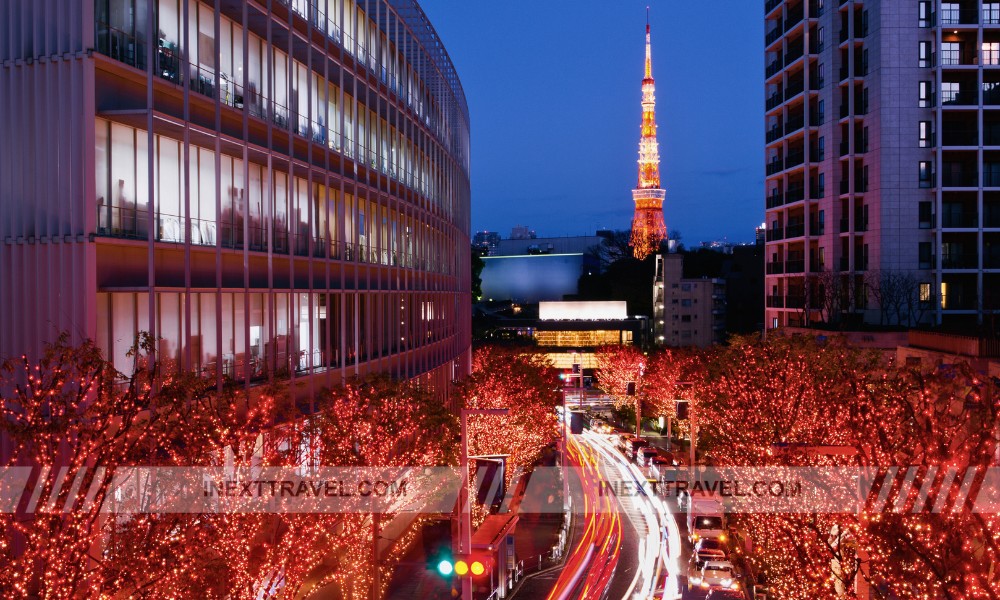
Whether you want to indulge in fine dining, enjoy cutting-edge art, or soak up the dynamic atmosphere, Roppongi Hills is a quintessential part of modern Tokyo life.
Number 3: Tokyo Imperial Palace.
At number 3, the Tokyo Imperial Palace is a stunning centerpiece of Japan’s historical and cultural landscape. Located in the heart of bustling Tokyo, it serves as the primary residence of the Japanese Emperor and is a potent symbol of Japan’s imperial tradition and continuity.
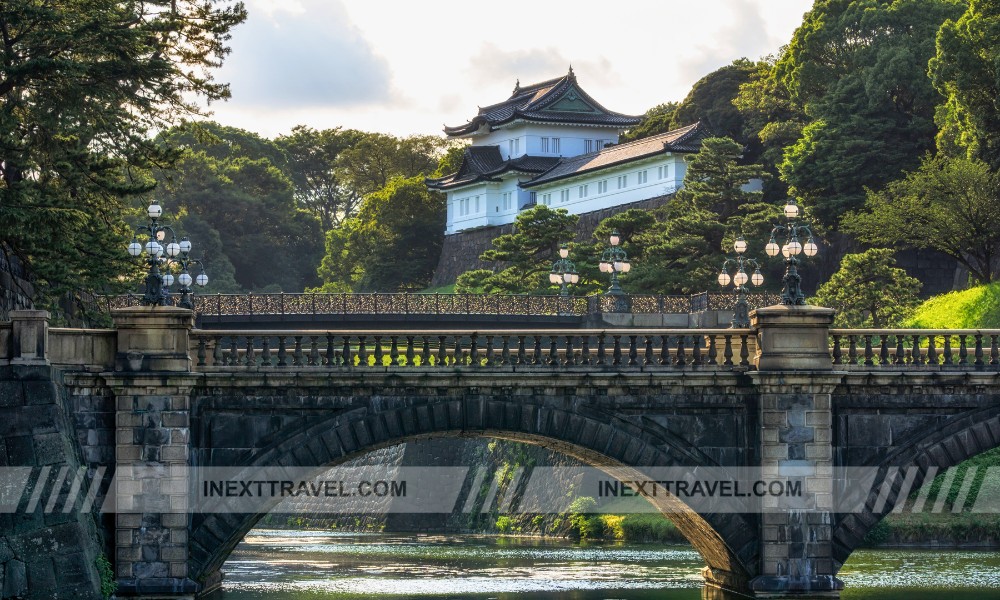
The palace occupies where Edo Castle once stood. It was the seat of power for the Tokugawa shogunate before the Meiji Restoration shifted the imperial capital to Tokyo.
The architecture and layout of the Tokyo Imperial Palace reflect Japan’s rich history. They combine elements of traditional Japanese design with modern touches that have been added over the centuries.
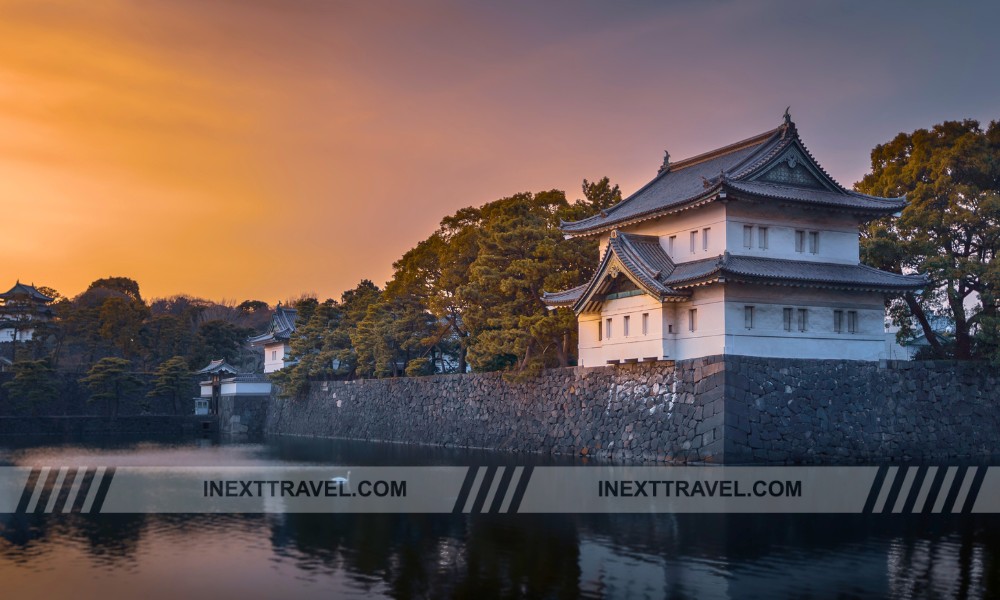
The palace grounds are expansive and feature several buildings, including the main palace (Kyuden), private residences for the Imperial Family, an archive, museums, and administrative offices, all set against meticulously maintained lawns and groves.
One of the palace’s most captivating features is its exquisite gardens. The East Gardens are renowned and open to the public throughout the year. Here, visitors can wander through beautifully landscaped areas that showcase classic Japanese garden techniques, complete with koi ponds, stone bridges, and historical guardhouses that date back to the Edo period. These gardens provide a serene retreat from urban life and play host to seasonal flora that offers a changing vista throughout the year.
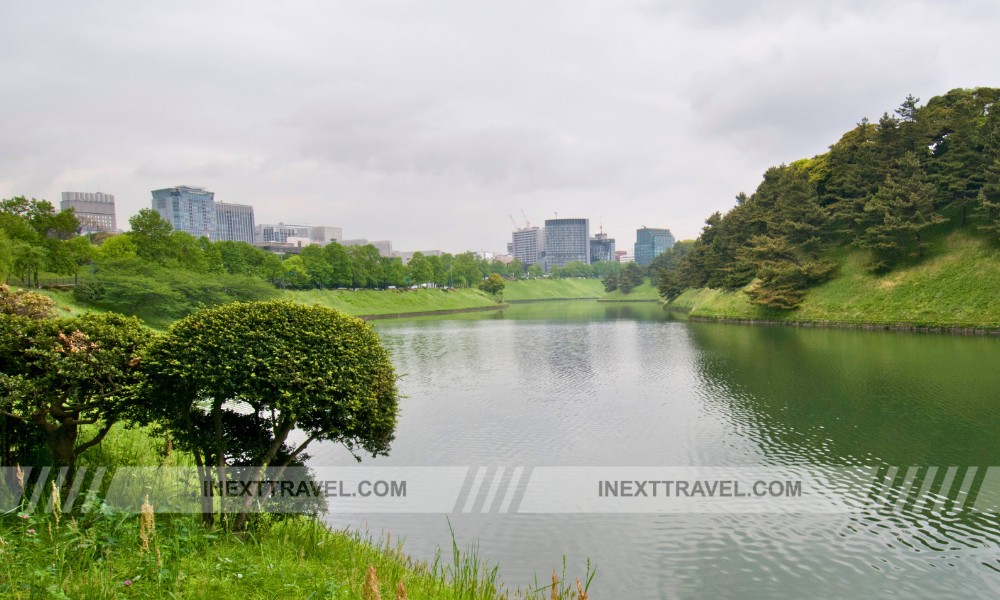
The Imperial Palace also plays an essentially ceremonial role in modern Japan. During the New Year and on the Emperor’s birthday, the inner grounds are opened to the public, allowing people from across the country to gather and see the Imperial Family during public appearances. This continues centuries-old traditions of imperial audience and celebration.
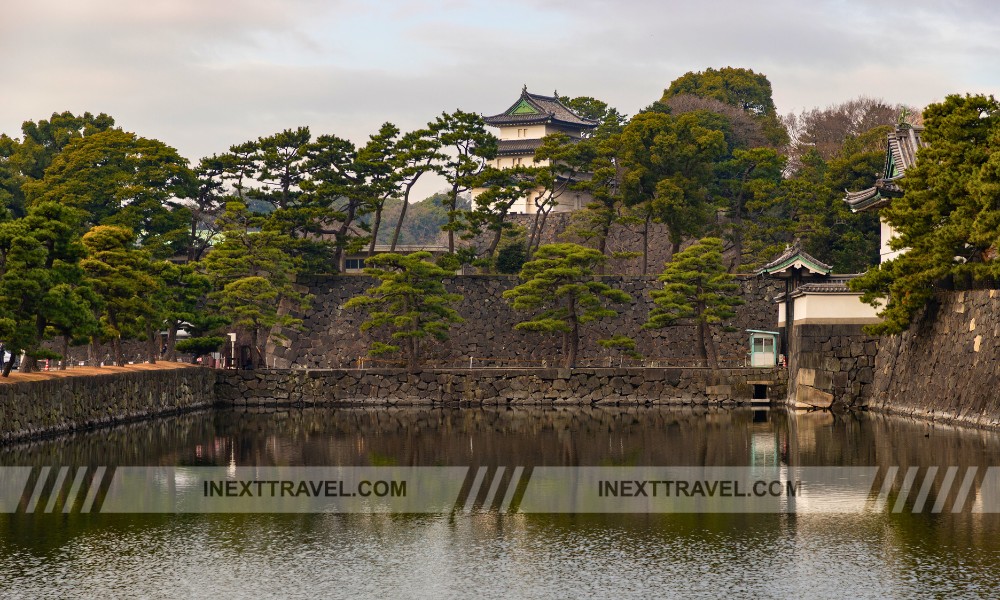
For anyone visiting Tokyo, the Imperial Palace offers a unique blend of historical significance, architectural beauty, and horticultural excellence, making it a compelling destination for understanding the past and present of Japan’s imperial heritage.
Number 2: Shinjuku Gyoen National Garden.
Our runner-up, Shinjuku Gyoen National Garden, is a splendid oasis in the heart of one of Tokyo’s most dynamic districts. Initially established in the 17th century as a feudal lord’s Tokyo residence, it was later converted into a garden under the imperial family and opened to the public in 1949.
Today, Shinjuku Gyoen merges three distinct garden styles—French Formal, English Landscape, and traditional Japanese—into a seamless and expansive landscape that provides a tranquil escape from the city’s bustling environment.
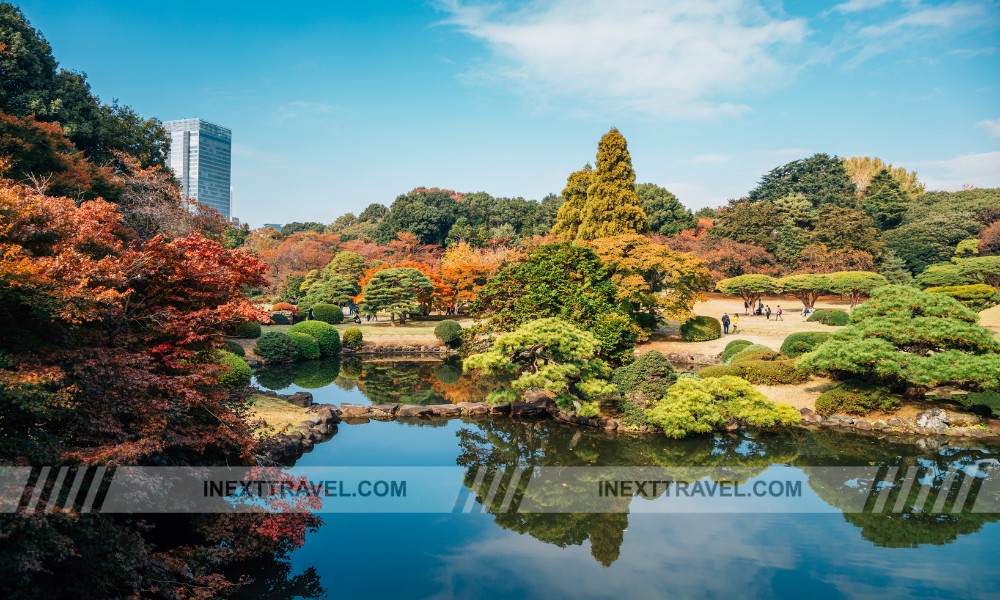
The French garden is characterized by its symmetrical design and neat lawns, offering a grand vista of meticulously arranged flower beds and trimmed hedges. The English garden features a more naturalistic landscape, sprawling lawns with large, shady trees and meandering walking paths inviting strolls.
In contrast, the traditional Japanese garden is a carefully crafted space of aesthetic refinement and serenity, complete with ornamental ponds, quaint bridges, and stone lanterns, all set against the backdrop of Tokyo’s skyscrapers.
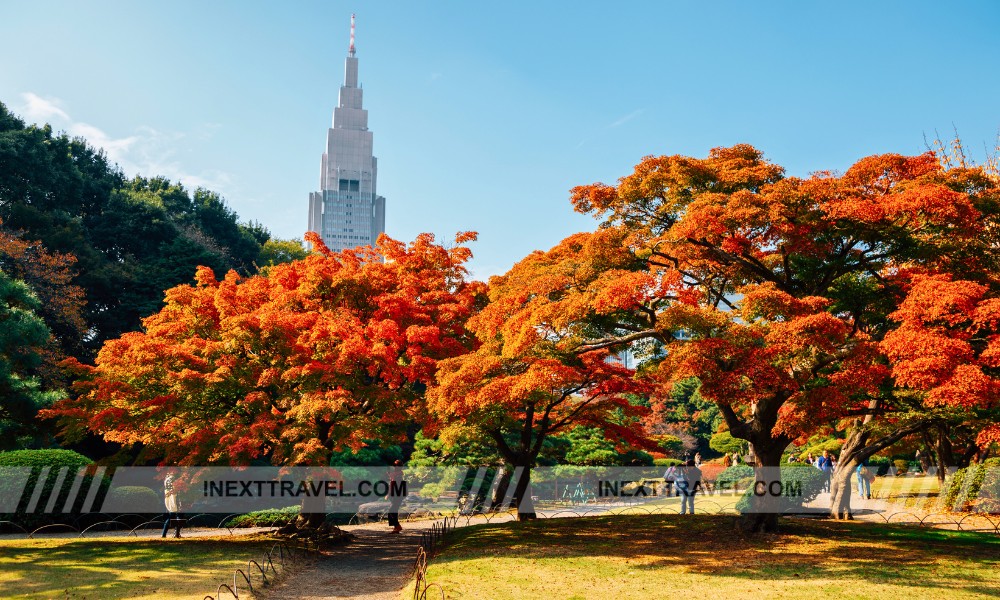
Shinjuku Gyoen is not only a place of beauty but also one of contemplation and recreation. It hosts seasonal floral displays that draw crowds throughout the year, particularly during the cherry blossom season, when the garden becomes one of the city’s most cherished viewing spots.
Additionally, autumn brings a brilliant display of chrysanthemums and colorful foliage, providing a stunning palette of colors that transform the garden’s landscape.
The garden’s expansive grounds also offer various amenities, including a greenhouse with tropical and subtropical plants, teahouses, and rest areas where visitors can pause and enjoy the natural surroundings.
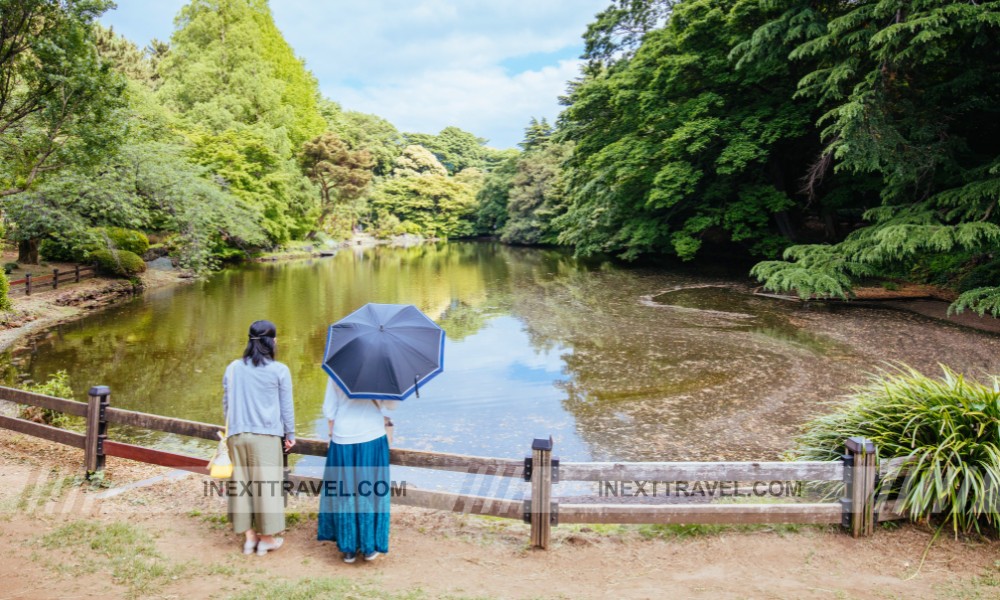
Whether you’re a local seeking a brief respite from urban life or a visitor exploring Tokyo’s diverse attractions, Shinjuku Gyoen National Garden offers a peaceful yet picturesque retreat, making it a must-visit for anyone looking to experience the harmonious blend of horticultural artistry and natural beauty in the heart of Tokyo.
Number 1: Mount Fuji (View from Tokyo).
The iconic view of Mount Fuji from Tokyo secures the top spot on our list. This majestic mountain, Japan’s highest peak, stands at 3,776 meters and is often shrouded in a mystique that captures the imagination of anyone who sees it.
On clear days, the view of Mount Fuji from various points in Tokyo, such as skyscrapers, public parks, or even moving trains, presents a breathtaking spectacle that symbolizes Japan’s beauty and enduring spirit.
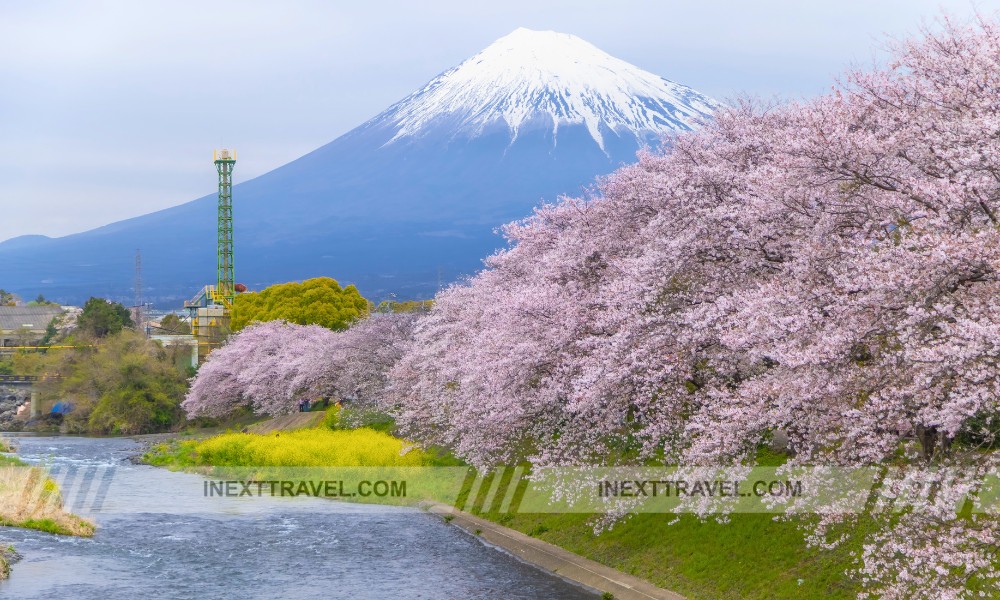
Mount Fuji is a natural wonder and a cultural icon deeply ingrained in Japanese art, literature, and religion. Over the centuries, it has inspired countless artists and poets, featuring prominently in ukiyo-e woodblock prints and contemporary photography.
The mountain’s almost perfectly symmetrical cone, capped with snow for about five months a year, creates a stunning visual contrast against Tokyo’s urban skyline, offering a unique blend of natural beauty and urban scenery.
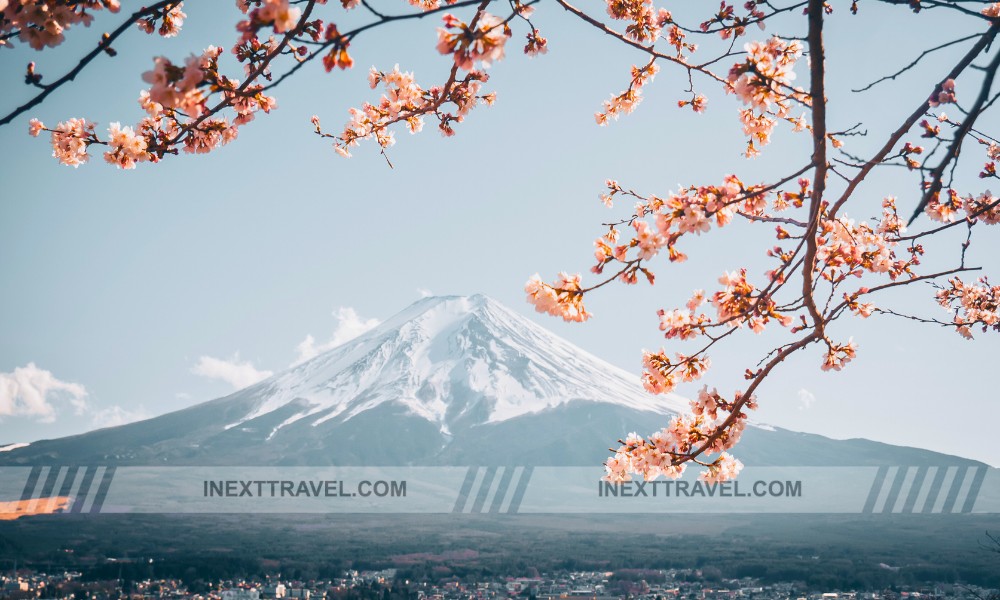
The best views of Mount Fuji from Tokyo can be enjoyed from high vantage points such as the Tokyo Tower, Tokyo Skytree, and the observation decks of various skyscrapers like the Roppongi Hills Mori Tower.
Parks like Inokashira and Jindaiji Botanical Gardens on the outskirts of Tokyo also offer more natural settings from which to admire the mountain. Additionally, during the early morning or late afternoon, when the skies are often more transparent, the silhouette of Mount Fuji becomes crisply visible on the horizon, providing a moment of serene beauty amid the hustle and bustle of city life.
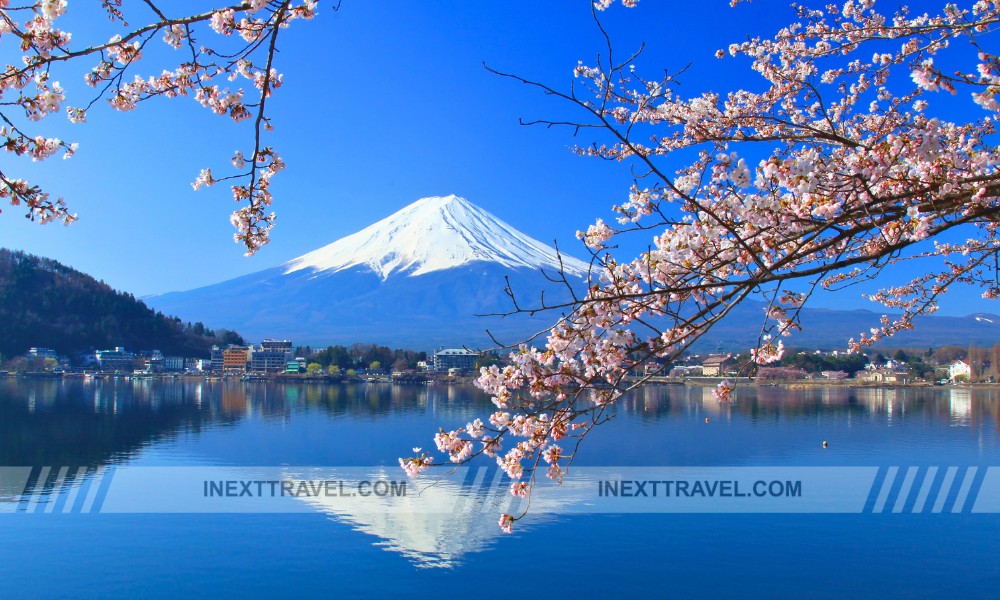
This iconic view is a visual treat and a poignant reminder of nature’s proximity and integral role in Japanese cultural identity. For many, the sight of Mount Fuji from Tokyo is a moment of connection to Japan’s natural heritage, making it a profound and moving highlight of any visit to the capital.
Whether you are a local or a visitor, catching a glimpse of Mount Fuji is a memorable experience that encapsulates Japan’s majestic and timeless allure.
Conclusion
As our journey through the ten best beautiful places in Tokyo comes to a close, it’s clear that the city’s charm lies in its diversity—from tranquil gardens and shrines that offer a glimpse into Japan’s rich history to vibrant districts and modern skyscrapers that showcase its forward-thinking culture.
Each location we’ve explored holds a unique allure, providing visitors and locals with countless opportunities to discover and appreciate Tokyo’s multifaceted beauty.
Whether seeking peace and serenity, architectural marvels, or cultural richness, Tokyo delivers an unparalleled urban experience.
We hope this guide inspires you to explore these stunning destinations and find your favorite corner of this dynamic city.